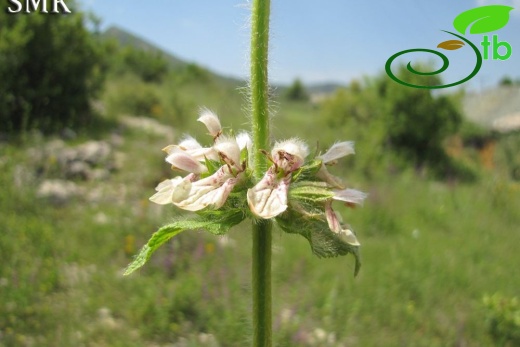Stachys minor
Stachys minor
Çayçe
Syn: Stachys libanotica var minor
Perennial herb, usually with basal sterile rosettes. Flowering stems erect, simple rarely sparsely branched middle, 25-90 cm, oft en reddish or redangled, setulose. Leaves oblong to elliptic, 4-14 × 1-4.5 cm, margin crenate or crenate-serrate, apex obtuse to acute, asymmetric and rounded at base, villous on both surfaces, subsessile or petiolate to 8.5 cm. Floral leaves lanceolate to rhomboid-lanceolate, subsessile to sessile, as long as or longer than verticillasters. Verticillasters 3-11, remote, 1-9 cm apart, 6-13 fl owered. Bracteoles broadly lanceolate to linear or linear-subulate, 6-15 mm, herbaceous, tip spinescent. Pedicels 1.5-4 mm. Calyx subbilabiate, subcampanulate, 8-14 mm, villous or glabrescent, mouth with hairy ring, prominently veined in fruit; teeth subequal, ovate to ovate-lanceolate or triangular, 1/2-1/3 × tube, recurved in fruit, margin with glandular hairs, tip spinescent, mucro c. 1-1.5 mm. Corolla rose, 15-18 mm, tube subincluded, bilabiate, upper lip entire, lower lip 3-lobed, middle lobe much larger than 2 lateral lobes, upper lip densely sericeous-tomentose on outside, hairs usually exceeding the lip. Style not exceeding the upper lip, 2-branched, branches equal. Stamens 4, included, thecae divaricate, fi laments with hairs from base to middle. Nutlets obovoid, faintly trigonous, 2-3 × 1.8- 2.2 mm, slightly winged near base, blackish-brown at maturity. 2n=30. Fl. 5-6. Pinus brutia forest, forest openings, 500-550 m.
Endemic. E. Medit. element.


